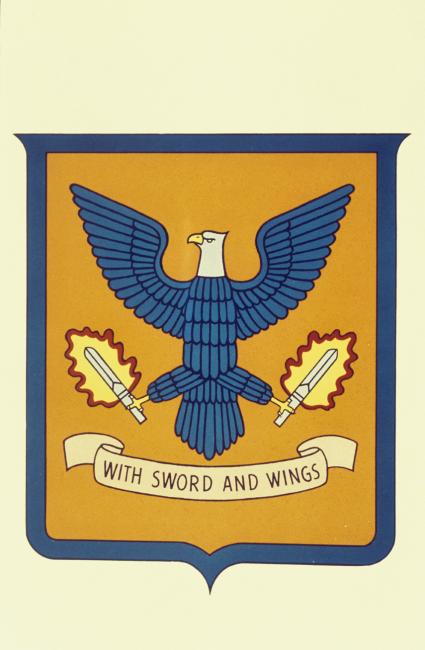VIII Fighter Command FO 221 BOMBER ESCORT
21 January 1944Description
This is a bomber escort fighter operation composed of a combination of three fighter types: P-38s, P-47s and P51s totalling 628 aircraft despatched to escort the heavy bombers attacking V-Weapon sites in the Pas-de-Calaise area and the Cherbourg area of France.
49 P-38s from: 20FG & 55FG provide escort for bombers attacking the in Cherbourg area. There are no losses or claims in this element.
531 P-47s from: 4FG; 56FG; 78FG; 352FG; 353FG; 355FG; 356FG; 358FG; 359FG and 361FG provide fighter escort and cover for B-17s and B-24s attacking in the Pas-de-Calaise area. This is the first mission for the 361 Fighter Group. 1 aircraft Failed to REturn (FTR) - 1 KIA and 1 aircraft is Damaged Beyond Repair (DBR) - 1 RTD. 5 other aircraft sustain battle damage. The fighters in this element claim 6-0-4 of German fighters in the air and 2-2-0 on the ground.
48 P-51s from IX Fighter Command, 354FG are also despatched to assist. There are no losses or claims in this element.
Mission Details
CHERBOURG
Description: FIGHTER ESCORT
Aircraft Type: P-38 Lightning
Notes: P-38S escort Cherbourg element only.

- Unit Hierarchy: Group
- Air Force: Eighth Air Force
- Type Category: Fighter

- Unit Hierarchy: Group
- Air Force: Eighth Air Force
- Type Category: Fighter
PAS-DE-CALAISE
Description: FIGHTER ESCORT
Aircraft Type: P-47 Thunderbolt
Notes: The 361st Fighter Group flies its first mission. Claims include 2-2-0 on the ground made by 56th Fighter Group as the first strafing claims.

- Unit Hierarchy: Group
- Air Force: Eighth Air Force
- Type Category: Fighter

- Unit Hierarchy: Group
- Air Force: Eighth Air Force
- Type Category: Fighter

- Unit Hierarchy: Group
- Air Force: Eighth Air Force
- Type Category: Fighter
![Ground crew of the 356th Fighter Group congratulate the pilot of a P-47 Thunderbolt nicknamed "Zombie" at Martlesham Heath air base. Handwritten caption on reverse: 'ZOMBIE yellow, black outline. [illegible text] black white common practice of 361st FS.'](https://assets.americanairmuseum.com/s3fs-public/styles/max_650x650/public/freeman/media-377162.jpg?itok=mPZN0Ow5)
- Unit Hierarchy: Group
- Air Force: Eighth Air Force
- Type Category: Fighter

- Unit Hierarchy: Group
- Air Force: Eighth Air Force
- Type Category: Fighter
Mission Statistics
- People killed in action: 1
- People returned to duty: 1
- Enemy aircraft destroyed by fighter: 8
- Enemy aircraft probably destroyed by fighter: 2
- Enemy aircraft damaged by fighter: 4
- Aircraft sent: 531
- Aircraft missing in action: 1
- Aircraft damaged beyond repair: 1
- Aircraft damaged: 5
Pas-de-Calais, France
Description: BOMBER ESCORT
Aircraft Type: P-51 Mustang
Notes: 48 P-51s from IX Fighter Command also participate in the escort. These fly top cover.

- Unit Hierarchy: Group
- Air Force: Ninth Air Force
- Type Category: Fighter
Mission Statistics
- Aircraft sent: 48
- Aircraft effective: 48
Connections
See how this entry relates to other items in the archive by exploring the connections below.
People

- Military/Civilian/Mascot: Military
- Nationality: American
- Unit: 353rd Fighter Group 350th Fighter Squadron
- Service Numbers: O-665391
- Highest Rank: First Lieutenant
- Role/Job: Pilot

- Military/Civilian/Mascot: Military
- Nationality: American
- Unit: 67th Fighter Wing 4th Fighter Group 334th Fighter Squadron No 71 'Eagle' Squadron
- Service Numbers: O-885405
- Highest Rank: Colonel
- Role/Job: Pilot
Revisions
Lee Cunningham 12-Jan-2016. Added Mission event for 354FG of IX FC per "the Mighty Eighth War Diary", Roger A. Freeman.
Lee Cunningham 12-Jan-2016. Added fighter claims on enemy aircraft to P-47 despatch per "The Mighty Eighth War Diary", Roger A. Freeman.
Lee Cunningham 12-Jan-2016. Added Mission Narrative per "The Mighty Eighth War Diary", Roger A. Freeman.
Lee Cunningham, 8th Air Force missions research database / Stan Bishop's 'Losses of the US 8th and 9th Air Forces', the Combat Chronology of the US Army Air Forces and the work of Roger Freeman including the 'Mighty Eighth War Diary'.